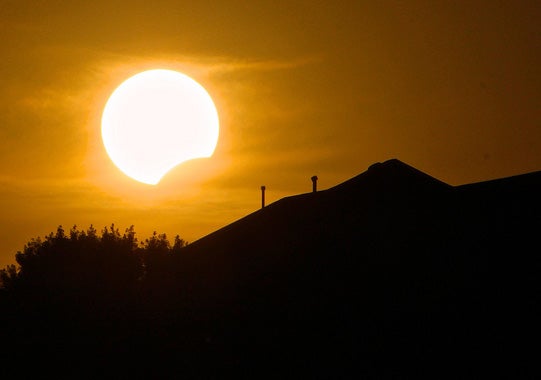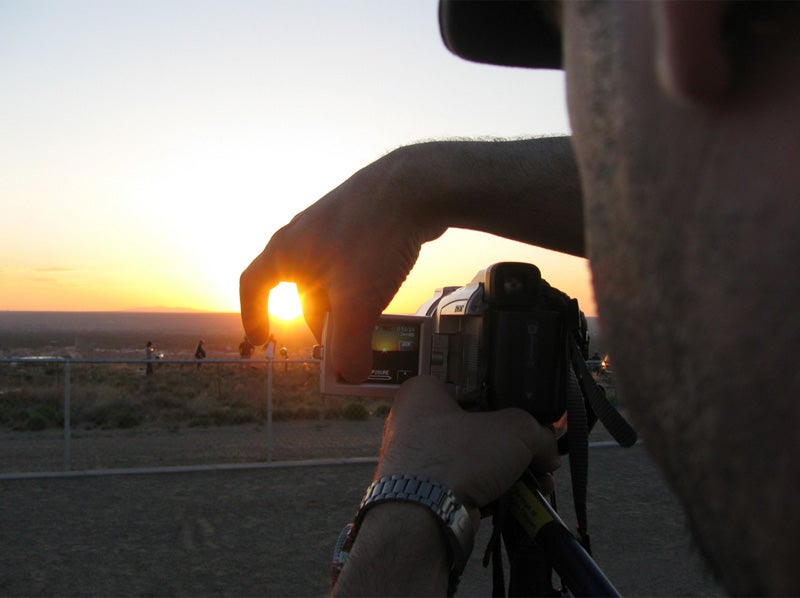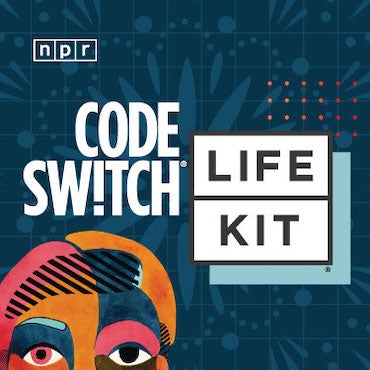Save the date!
ListenLet’s mark our 2014 calendars with these out-of-this-world reminders: Only 2 solar (April 29th- Annular, extreme South Pacific Ocean; October 23rd- partial solar starts minutes before sunset) and two lunar (April 15th – We see all of it; October 8th in mid-eclipse at moonset) eclipses. Triple conjunction Venus, Jupiter and the moon, August 23rd in the pre-dawn sky. Rosetta lands on comet in August. Orion Multi-Purpose Crew Vehicle test flight in September. India’s MOM and US MAVEN mission both arrive at Mars in late September. Space Tourism takes off with first flights possibly early 2014.
January 6, 2014
[Dave Heller] Let’s mark up our 2014 calendars with out of this world reminders with Derrick Pitts, chief astronomer at the Franklin Institute. Derrick, happy new year.
[Derrick Pitts] Thank you Dave, and same to you.
I’m looking forward to a solar eclipse for 2014. Doable?
Depends where you’d like to go. You can do a partial solar eclipse right here in Philadelphia. There is an eclipse that’s happening actually out in the central portion of the United States, and that is a partial solar eclipse. And because we’re way over on the eastern side of that, we get to see just a little bit of that actually. We don’t get to see all of it.
Do astronomers grade partial in terms of say percentages, as in a 50% eclipse or a 5% eclipse?
Scientists certainly do rate eclipses according to the amount of the disc of the sun that’s covered. You can have a total solar eclipse for a particular location, and then any place off the centerline you’ll see a partial eclipse. Or it can be a partial eclipse in that no one sees a total solar eclipse but there’s a partial that is viewable and there’s a maximum amount of that eclipse along one particular zone of the whole range of the viewing range of that eclipse.
“Scientists certainly do rate eclipses according to the amount of the disc of the sun that’s covered. You can have a total solar eclipse for a particular location, and then any place off the centerline you’ll see a partial eclipse.”
Derrick Pitts
-

Photo by Flickr user Doug Wertman
Is that the case in this regard?
And that’s the case in this regard. It’s not a total solar eclipse for North America, it’s a partial solar eclipse for North America. We way over on the eastern side, near the eastern limit, don’t get to see very much of it at all. But we get to see a little tiny bit, and that one’s on October 23. But that’s the second one of the year. The first solar eclipse of the year takes place on April 29. That one is what’s called an annular eclipse; that one is available in the extreme South Pacific ocean, so no good for us but if you’re a penguin way down on that end of the planet, you’d be able to see that one.
“Annular eclipse” meaning … ?
Annular eclipse meaning that it’s an eclipse in which a viewer would see a ring of sunlight surrounding the moon. The moon happens to be a little bit closer to the Earth so the geometry of the whole set up means that we see a ring, so the word annular comes from annulus, meaning ring. So it’s a ring eclipse.
How about a true lunar eclipse?
There are lunar eclipses; there are two this year. The first one happens to be on April 15. There’s one more that’s again in October — it’s two weeks before the solar eclipse that’s going to be visible in this part of the world, it’ll be on October 8. But that lunar eclipse won’t show us as much as the one that we saw back in April.
-

Annular eclipse. Photo by Flickr user Kathy Cannon
There’s an event coming up that sounds like a delicious dessert: The triple conjunction.
Ah, yes. If only it were a triple conjunction of planets, that would be delicious. This happens on the 23rd of August, it’s in the predawn sky, and instead of involving three planets which a real conjunction would involve, this is two planets and the moon. And the planets are Venus and Jupiter, the two brightest planets of the solar system, and the moon. They’ll be visible over in the predawn sky; the three will be over there together, it’ll be easy to see without any difficulty at all. And it’s probably one of the, I’d say the best planetary viewing opportunities with the moon we’ll have this year all together. One thing we do need to keep in mind about this though is that while they may appear to be together in the sky, we have to remember that there are hundreds of millions of miles between Venus as we see it in the sky and Jupiter in the sky. So in a sense you have a real opportunity to see the three dimensional structure of the solar system.
So we’ve considered astronomical phenomena, let’s now take up space events.
Probably the most interesting to everybody is whether or not there will be space tourists this year. People who have purchased tickets on the Virgin Galactic spacecraft to fly into low Earth orbit or just to reach space; it’s expected that their first real test flights will happen this year and perhaps even the first tourist will travel in space or become astronauts of a sort. We also can expect in August that a spacecraft called Rosetta will actually land on the surface of a comet, attach itself, dig into the surface of the comet and try to figure out more about what comets are like.
How big is this comet that it can accomodate a spacecraft?
Well when we see comets in the sky we might think that they’re rather small, but typically they tend to be half a mile or a mile in size. So it’s perfectly feasible for a small spacecraft to land on the surface without too much difficulty at all. Comet Siding Spring: Another comet that might be of some interest, not necessarily very bright, its main claim to fame is that in October of this year, it’s going to skirt very close to the planet Mars. So we’ll have a close approach, not an impact, but a close approach.
But it is getting increasingly crowded on the surface of Mars.
It is getting crowded on the surface of Mars. Not only are there many rovers on the surface, but there are also orbiting spacecraft now populating the Martian sky. Two that will become active this year will be the India’s MOM spacecraft, which was launched in September of last year. Its objective is to study the atmosphere of Mars, the surface of Mars and look for sources of methane. And then the United States spacecraft called MAVEN will also study the Martian atmosphere and gather more data from the surface with more advanced equipment, that also begins this year. In fact the two of them arrive in Mars’ orbit just two days apart in September. And probably the most important for the US space program is that it’s expected that the Orion multi-purpose crew vehicle will get a real test this year. And that real test will be opening the door for the US space program to reestablish itself as providing launch capability to carry astronauts back into Earth orbit and begin the path of actually extending the US manned space experience back out to the moon and onward to Mars. Lots of great stuff coming up and it’ll be an exciting year no matter how you look at it.
“Two [orbiting spacecraft] will become active this year will be the India’s MOM spacecraft, which was launched in September of last year. Its objective is to study the atmosphere of Mars, the surface of Mars and look for sources of methane. And then the United States spacecraft called MAVEN will also study the Martian atmosphere and gather more data from the surface with more advanced equipment, that also begins this year.”
Derrick Pitts
WHYY is your source for fact-based, in-depth journalism and information. As a nonprofit organization, we rely on financial support from readers like you. Please give today.




